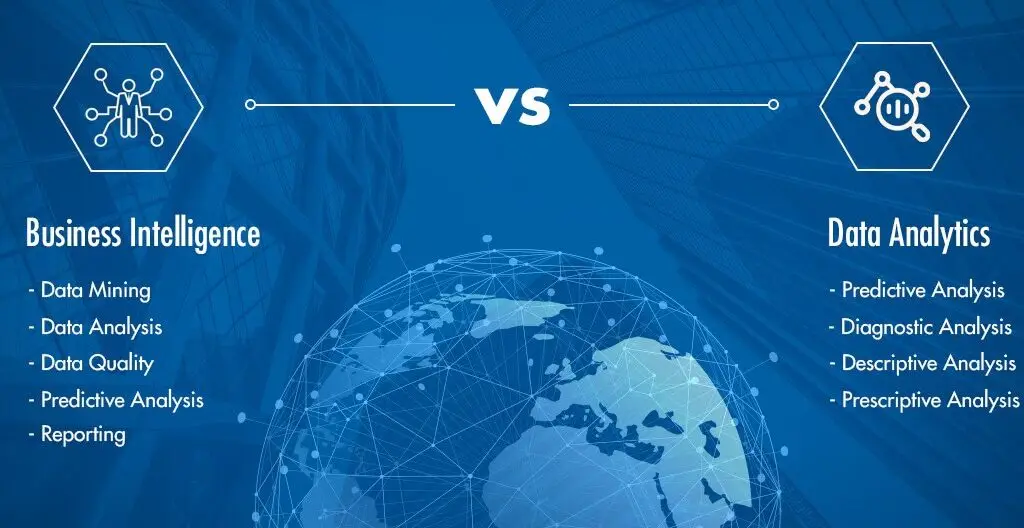In today’s data-driven business world, the terms “data analytics” and “business intelligence” are often used interchangeably. However, while they are related concepts, they each have their own unique characteristics and benefits. In this blog post, we will explore the differences between data analytics and business intelligence, and why they are both important for modern businesses.
Data Analytics
Data analytics is the process of examining large and complex data sets in order to uncover hidden patterns, correlations, and insights. It involves using a variety of tools and techniques to process, clean, and analyze data, with the goal of making informed business decisions. Data analytics can be divided into three main categories:
- Descriptive Analytics: This involves examining historical data to understand what has happened in the past. It is used to identify trends, patterns, and anomalies in data sets, and is often used to create reports and dashboards that provide a high-level overview of business performance.
- Predictive Analytics: This involves using statistical and machine learning models to analyze historical data and make predictions about future events. It is used to identify potential opportunities and risks, and can help businesses to make informed decisions about the future.
- Prescriptive Analytics: This involves using a combination of descriptive and predictive analytics to recommend specific actions or decisions. It is used to optimize business processes and improve overall performance.
Business Intelligence
Business intelligence (BI) is the process of collecting, analyzing, and presenting data in a way that helps businesses to make informed decisions. It involves using a variety of tools and techniques to transform raw data into actionable insights. Business intelligence can be broken down into four main categories:
- Data Mining: This involves using statistical and machine learning algorithms to analyze large data sets and identify patterns and trends.
- Reporting: This involves creating reports and dashboards that provide a high-level overview of business performance.
- Online Analytical Processing (OLAP): This involves creating multidimensional data models that allow users to analyze data from multiple perspectives.
- Data Visualization: This involves presenting data in a visual format, such as charts and graphs, in order to help users, understand complex data sets more easily.
Why are Data Analytics and Business Intelligence Important for Businesses?
In today’s data-driven business world, data analytics and business intelligence are critical for success. By using these tools and techniques, businesses can:
- Gain insights into customer behavior and preferences
- Identify trends and patterns in data sets
- Make informed decisions based on data rather than guesswork
- Optimize business processes and improve overall performance
- Identify potential opportunities and risks
- Stay ahead of the competition
In conclusion, data analytics and business intelligence are both important for modern businesses. While they are related concepts, they each have their own unique characteristics and benefits. By using these tools and techniques, businesses can gain a deeper understanding of their data, make informed decisions, and stay ahead of the competition in today’s rapidly changing business environment.



